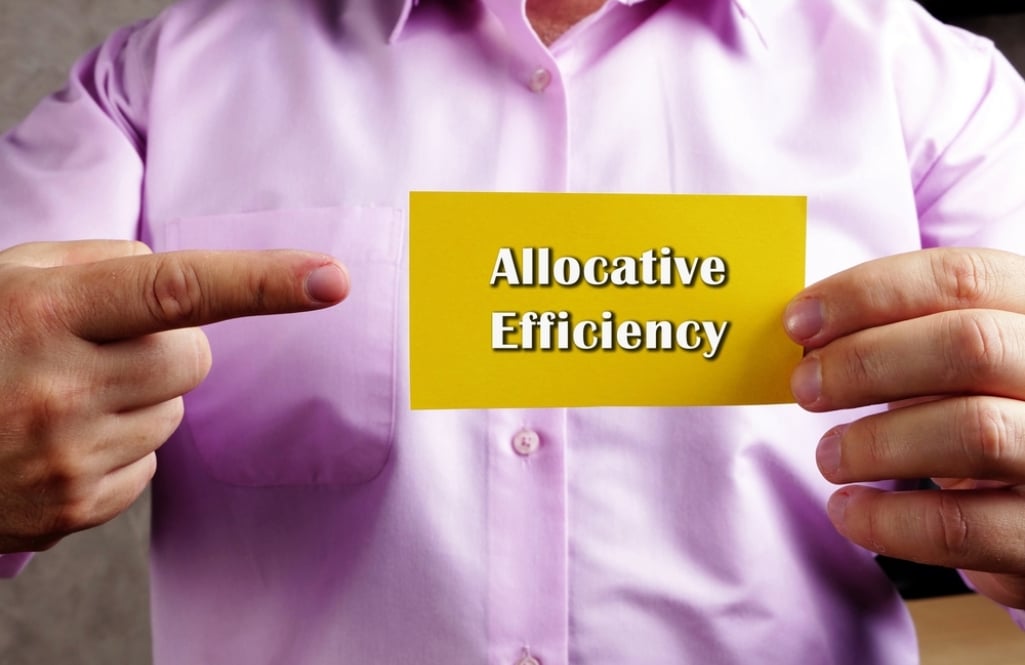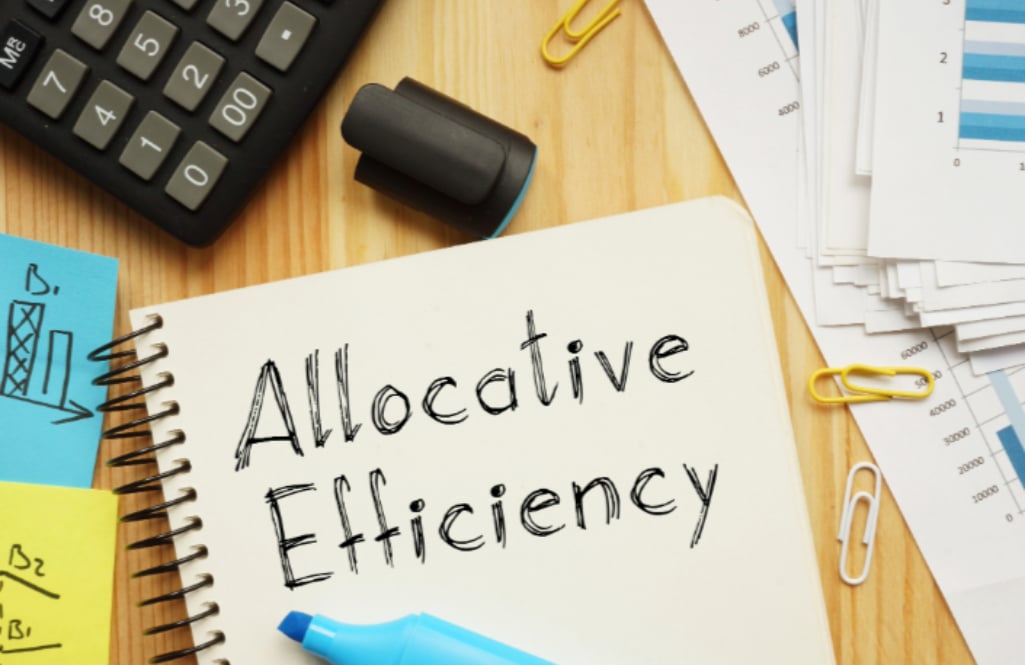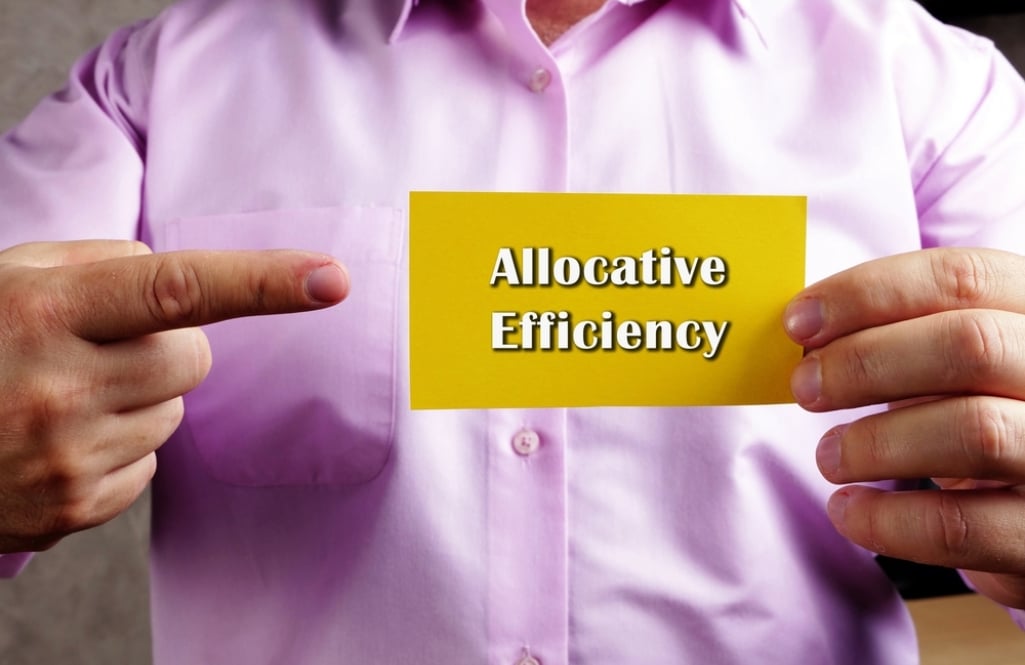
What Is Allocative Efficiency – Get All The Information
Key Takeaways:
- Allocative efficiency occurs when resources are allocated optimally to fulfil societal desires, such as constructing houses in high-demand areas.
- Resource allocation is vital for economic growth, as inefficient production can hinder output and increase costs.
- Achieving allocative efficiency involves informed decision-making by consumers and producers, considering market information.
- Maintaining allocative efficiency requires balancing production levels to avoid overproduction, which can lead to unnecessary costs and decreased demand.
Did you know that Allocative efficiency refers to a well-known term in modern economics? It is when the economy produces what consumers and producers want, maximizing overall welfare. It happens when the benefit of producing one more item equals the cost.
Allocative efficiency occurs when the skills needed for a contract match the parties’ skills. However, to understand all of its concepts, it’s crucial to get from the beginning, shall we?
Understanding Allocative Efficiency as a PRO
An efficient market is one where all important information about market activities is easily available to participants. In this type of market, market prices accurately represent this information.
Opportunity cost means giving up the benefit of one choice when you choose another. For a market to be efficient, it must exhibit informational and operational efficiency.
What does informational efficiency ensure?
In striving for allocational efficiency, firms must conscientiously consider the resources at their disposal in relation to the production possibility frontier (PPF). The PPF illustrates the maximum output attainable given current resources and technology.
However, achieving allocational efficiency also necessitates an understanding of the social costs associated with production.
These costs extend beyond the direct expenses incurred by the firm to encompass the broader impact on society, such as environmental degradation or resource depletion.
Thus, while optimizing output within the constraints of the PPF is essential, it must be balanced against the social cost implications to ensure sustainable and socially responsible production decisions.
Achieving Allocational Efficiency

Allocational efficiency means operating at the best point on the production possibility frontier (PPF), using resources to maximize welfare and minimize opportunity costs.
To achieve this, we need to think about making things efficient. We also need to use resources wisely. By doing so, we can create valuable products and services for society.
It also involves assessing costs for producers and society, including private and external costs.
It considers how the cost and demand curves interact in a competitive market.
Prices are established based on the famous supply and demand, which helps ensure fair distribution and efficient use of resources.
Calculating Allocative Efficiency like a PRO
If you’re creating something new or thinking about changing the price of what you already have, figuring out allocative efficiency can help you pick the best price and decide how much to make. Here’s how it works:
Asset production expenses
It is crucial to understand the costs tied to producing your product or service and how they fluctuate with output. Some costs, like rent, remain fixed across production levels, while others, such as materials, vary with each unit produced.
Precise projections of production costs aid in charting marginal costs and identifying allocative efficiency.
Evaluate demand trends
Examining the demand for your product or service in the market is essential. As production increases, the willingness of consumers to pay diminishes, impacting prices. Accurate estimations of marginal demand facilitate precise calculation of allocative efficiency.
Plot the curves

Drawing the marginal demand and supply lines on one graph lets you see how they compare.
This graph shows you if things are being done efficiently and how the market changes when you make more or less of something, so you can see if you’re making too much or too little.
Determine the intersection
Locate where the marginal benefit curve intersects with the marginal supply curve on your graph.
This intersection displays the optimal amount and price for your product or service. It ensures that each unit sold covers its production cost.
It makes sure that every item sold pays for its production. For a business, allocative efficiency means making products at a price that covers the cost of making more.
For a company, allocative efficiency means making goods at a price that covers the cost of producing more. Maximizing units sold at a profit maximizes overall profit from your product or service.
What is the Allocative Efficiency Formula?
A company is allocatively efficient in a perfect market once the present price equals the marginal cost.
In other words, An economy that is allocatively efficient achieves the ideal balance of goods and services. A company is considered allocatively efficient when its pricing aligns with its marginal costs, indicating equilibrium in a flawless market (i.e., P = MC).
Allocative vs productive efficiency
Productive efficiency means companies find the best way to reduce costs using the right inputs.
On the other hand, allocative efficiency relates to allocating economic resources in a way that maximizes consumer satisfaction compared to input expenses.
Allocative efficiency and Distributive Efficiency

Allocative efficiency occurs when goods are distributed in an economy to fulfil societal desires. For instance, in the housing market, houses are constructed in areas with high demand for residency.
Production’s lack of efficiency can impede economic growth, impacting both output and pricing levels.
Why Is Allocative Efficiency Significant?
Allocative efficiency holds significance as it guarantees resources are allocated to fulfil the greatest number of desires.
How does Achieving Allocative Efficiency happen?
Allocative efficiency occurs when individuals, such as consumers and producers, make informed decisions about resource allocation using market information. Both private companies and government groups use this idea to find projects that make money and help people.
For a company, allocative efficiency means producing goods at a price that covers the cost of making an additional item.
Because resources are limited, organizations need to share them wisely to get the most out of them. They try to use resources in a way that gives them the most value and doesn’t waste anything.
Understanding Economies of Scale and Market Equilibrium
With economies of scale, opportunity cost declines as production increases until reaching a threshold point. Beyond this point, opportunity cost begins to rise again.
As supply increases, demand typically decreases, reflecting reduced societal desire as availability rises.
When does market equilibrium occur?
Market equilibrium occurs when a certain quantity of a commodity maximizes societal satisfaction. Allocative efficiency is attained when goods and services are produced in quantities society desires, aligning with market equilibrium.
Inefficient production can slow economic growth, impacting output and the cost of goods and services.
What is the Allocative Efficiency Example?

Imagine a company making merchandise for a TV show with a small but loyal fan base. At first, the demand for the products decreases slightly as more are made because the fans are really into it. But if too many are made, people lose interest, and demand decreases even more.
The company can make up to 6,000 items; the more they make, the faster the cost increases. They find the best balance at 5,500 items, selling each for $70, which is the best way to make everyone happy.
Making too many could cost them more than they make, which is only good for some.
Bottom line
In a perfectly competitive market, allocative efficiency ensures that resources are allocated optimally to meet societal needs, thus maximizing welfare while minimizing costs.
This means that the market price accurately reflects the intersection of supply and demand, ensuring fair allocation of resources.
Conversely, inefficient resource allocation can hinder economic growth by reducing output and increasing costs. Therefore, achieving allocative efficiency is crucial for promoting economic prosperity and ensuring productivity.
The post What Is Allocative Efficiency – Get All The Information appeared first on FinanceBrokerage.




























